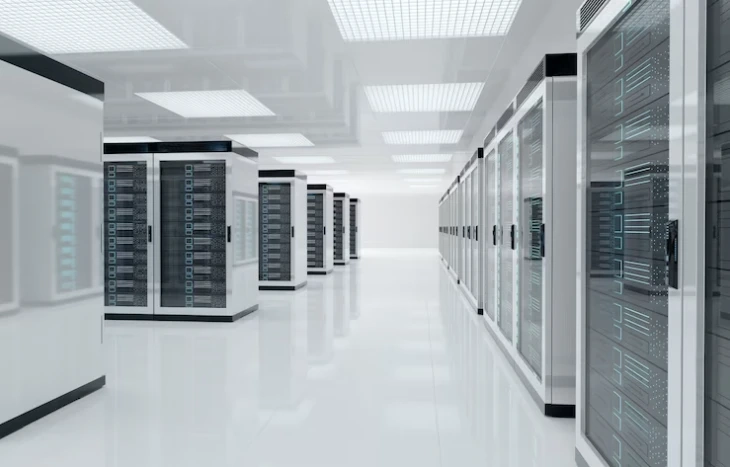Network Attached Storage (NAS) has become a crucial solution for businesses and tech-savvy individuals seeking centralized, reliable, and affordable data storage. However, as technology rapidly evolves and data demands increase, ensuring that your NAS remains efficient and future-proof is essential.
Whether you are a small business owner managing company files or a home user safeguarding a growing library of memories, this guide will help you understand how to future-proof your NAS storage for 2025 and meet the demands of tomorrow. From choosing the right features to planning for scalability, we’ll walk you through everything you need to consider.
Why Future Proofing Your NAS Matters?
Data growth is accelerating at an unprecedented rate. According to IDC, the global datasphere is expected to double by 2026. This means more businesses and individuals need scalable, efficient, and reliable NAS storage solutions to avoid bottlenecks and disruptions.
Future-proofing your NAS ensures you don’t have to frequently overhaul your system, saving time, money, and effort in the long run. Plus, a well-thought-out, future-ready NAS storage strategy ensures your data remains secure, accessible, and backed up using the latest technologies.
Here’s what you need to consider to keep your NAS relevant and efficient as 2025 approaches.
Key Considerations for Future-Proofing Your NAS
Hardware Scalability
The data you store today is only the beginning. By 2025, your storage needs could double or triple. That’s why you need a NAS that can grow with you.
Choose Expandable Storage Bays
Opt for a NAS with expandable drive bays. While a four-bay NAS may be sufficient now, having the flexibility to add drives in the future will save you from replacing your system entirely. Look for models that support expansion units for added capacity.
Invest in Higher-Capacity Drives
While starting with mid-sized drives might seem cost-effective, investing in high-capacity drives (e.g., 16TB or higher) prepares your NAS for the future. Additionally, ensure your NAS supports the latest hard drive technologies, like SATA 3.0 or NVMe SSDs, for faster performance.
Future Proofing Performance
Future-Forward Processors and RAM
Your NAS processor (CPU) plays a critical role in data processing, file sharing, media streaming, and running applications. Future-proof your NAS by choosing models with advanced multi-core processors and expandable RAM. This ensures it can handle demanding tasks like virtualization or 4K video transcoding as your needs evolve.
Support for 10GbE Networking
Gigabit Ethernet (1GbE) connections are standard, but as 2025 approaches, 10GbE (10-Gigabit Ethernet) is becoming the gold standard for high-speed data transfer. Ensure your NAS supports this protocol to stay ahead of increasing network speeds.
Backup and Redundancy Planning
Redundant Backup Solutions (NAS Backup)
Data loss can occur due to hardware failure, ransomware attacks, or accidental deletion. Ensuring sufficient redundancy in your NAS setup is a must. Opt for NAS systems that offer RAID configurations like RAID 5 or RAID 6 to protect against drive failures.
However, RAID alone isn’t enough. A solid NAS backup strategy includes replicating data to an external cloud service or another NAS unit. Consider using hybrid solutions that combine local NAS backup with cloud sync services, providing both speed and extra security.
Snapshot Technology for Version Control
Snapshot technology allows you to roll back to previous versions of your files in case of accidental edits or deletion. This feature is invaluable in a 2025-ready NAS, especially for businesses managing critical data.
Advanced Security Features
Built-In Encryption
Cyberattacks and unauthorized access continue to rise, making security a top priority. Future-proof your NAS storage by choosing a model with built-in AES 256-bit encryption to protect your data at rest and during transfers.
Multi-Factor Authentication (MFA)
By 2025, multi-factor authentication will likely become the norm for securing sensitive data. Look for NAS devices offering MFA as an added security layer for user accounts.
Regular Firmware Updates and Antivirus
Ensure the NAS system you choose has a robust firmware update policy to protect against emerging threats. Devices with built-in or compatible antivirus solutions are also a major plus.
Support for Virtualization and AI Workloads
Future AI and ML Needs
Future businesses will increasingly leverage artificial intelligence (AI) and machine learning (ML) solutions requiring powerful data handling and analysis capabilities. If you foresee such use cases, choose a NAS that supports Docker containers or has the capacity to integrate with AI applications.
Virtual Machines
NAS systems are no longer limited to simple file storage. Many now support virtual machines (VMs) and applications. Future-proof your NAS with sufficient processing power and memory to handle simultaneous VM operations.
Energy Efficiency and Sustainability
Eco-Friendly Drives
By 2025, environmental concerns and rising energy costs may drive a shift toward sustainability. Choose NAS devices and drives designed for lower power consumption without compromising performance. Many brands offer “green” drives specifically optimized for NAS use.
Automated Power Management
Look for power-scheduling features like idle drive spindown or scheduled power-on/off to minimize energy wastage when your NAS isn’t in active use.
Compatibility with Smart Home and IoT
Smart homes and IoT (Internet of Things) devices are more prevalent than ever. Ensure your NAS system supports integration with smart home systems and IP cameras. This will future-proof your investment and expand its functionality beyond traditional file storage.
Making the Right Choice
Future-proofing your NAS isn’t just about buying the most expensive model on the market. It’s about understanding your current and future needs, setting realistic goals, and ensuring scalability and compatibility.
If affordability is a priority, focus on mid-range NAS solutions offering options to expand storage over time. For businesses with big data demands, invest in systems that support enterprise-grade functionality like virtualization, AI applications, and fast networking.
Looking Ahead
Adopting an affordable NAS storage solution today doesn’t mean compromising on your future needs. With careful planning, the right features, and a robust NAS backup strategy, you can ensure your investment remains relevant well into 2025 and beyond.
If you’re ready to future-proof your data storage, start exploring NAS options now and make informed decisions to secure your digital assets for years to come.


